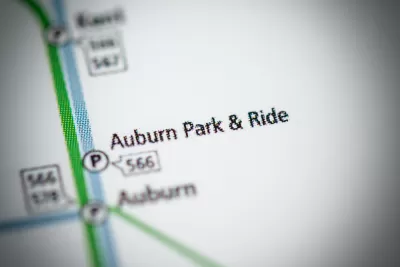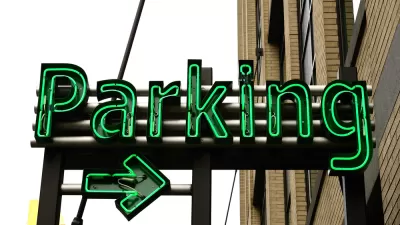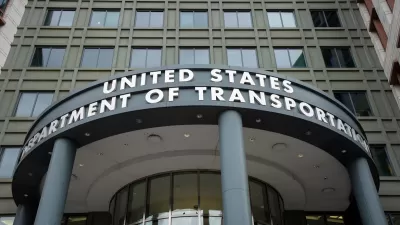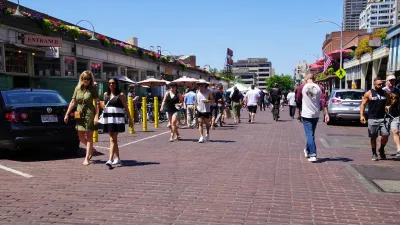Faced with the expensive costs of adding park and ride facilities along its expanding transit system, transportation planners in the Seattle region wonder if it's money well spent.

Lizz Giordano reports from the Puget Sound region, where commuters, transit agencies, and elected officials are caught in a dilemma about how much parking access to provide around light rail, train, and bus lines. "Some of the discussion also revolves around questions about land use and whether to focus more attention on creating density around transit centers, rather than forcing the public to pay for parking spots," according to Giordano.
Giordano's selects the Mountlake Terrace park and ride as a case study of the dilemma of parking capacity. "A 2009 rebuild nearly tripled the parking capacity at the park and ride, which is owned by Snohomish County’s Community Transit," according to Giordano. "But now, the garage is again bursting at the seams."
The cost of providing parking is soaring—the under-construction Kent parking and ride facility will spend $100,000 on each stall. Critics call that an expensive subsidy for only about a third of transit users in the region. Some cities have begun looking for other first-last mile solutions—Seattle, for instance discourages new parking facilities near facilities. But still, Sound Transit 3 will add 10,000 new parking spaces, estimated to cost nearly $700 million.
FULL STORY: As Puget Sound region grows, park and rides fill up

Trump Administration Could Effectively End Housing Voucher Program
Federal officials are eyeing major cuts to the Section 8 program that helps millions of low-income households pay rent.

Planetizen Federal Action Tracker
A weekly monitor of how Trump’s orders and actions are impacting planners and planning in America.

Ken Jennings Launches Transit Web Series
The Jeopardy champ wants you to ride public transit.

Why Bike Lanes Are Good: An Explainer for the US Transportation Secretary
Sean Duffy says there’s no evidence that bike lanes have benefits. Streetsblog — and federal agencies’ own data — beg to differ.

California Invests Additional $5M in Electric School Buses
The state wants to electrify all of its school bus fleets by 2035.

Austin Launches $2M Homelessness Prevention Fund
A new grant program from the city’s Homeless Strategy Office will fund rental assistance and supportive services.
Urban Design for Planners 1: Software Tools
This six-course series explores essential urban design concepts using open source software and equips planners with the tools they need to participate fully in the urban design process.
Planning for Universal Design
Learn the tools for implementing Universal Design in planning regulations.
Ada County Highway District
Clanton & Associates, Inc.
Jessamine County Fiscal Court
Institute for Housing and Urban Development Studies (IHS)
City of Grandview
Harvard GSD Executive Education
Toledo-Lucas County Plan Commissions
Salt Lake City
NYU Wagner Graduate School of Public Service





























